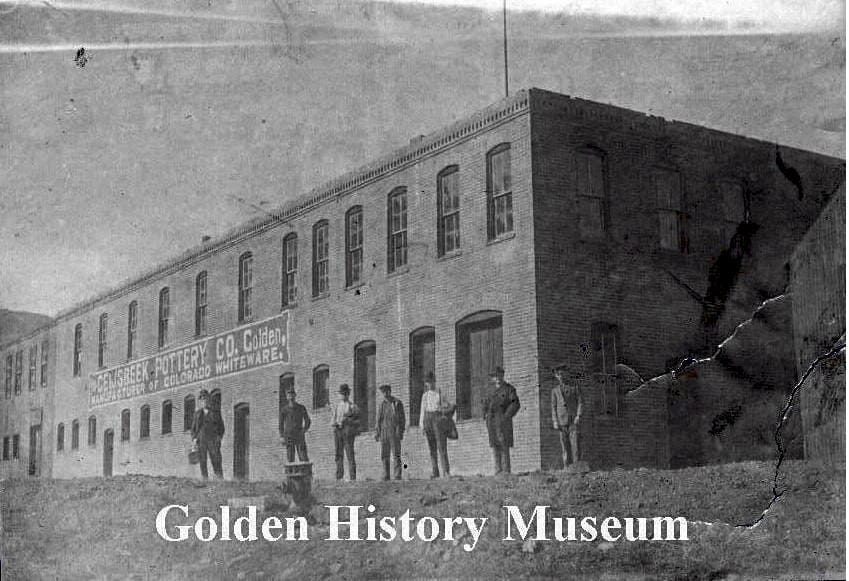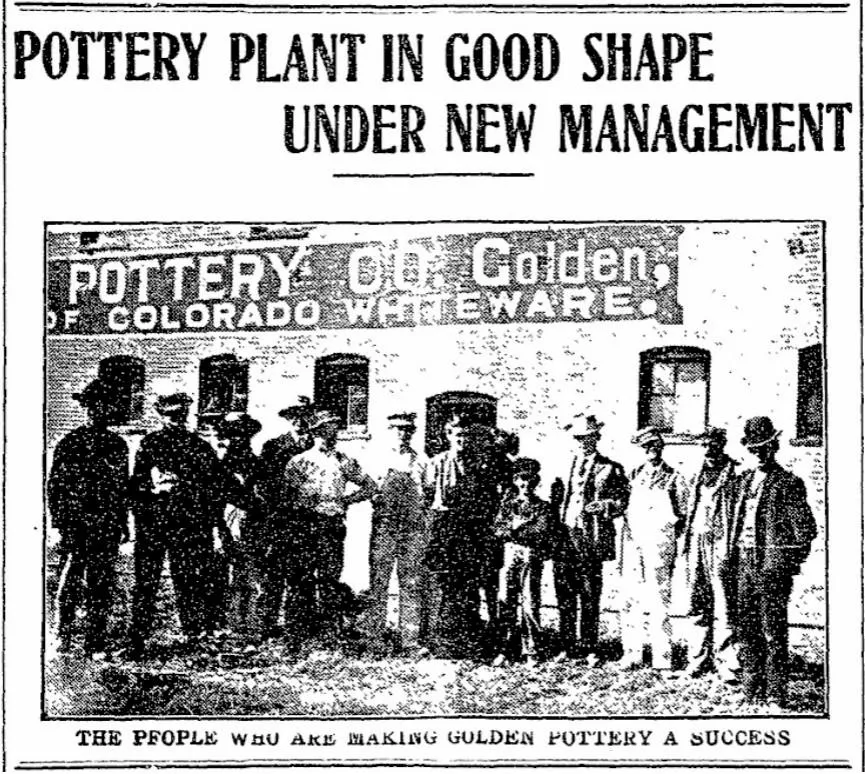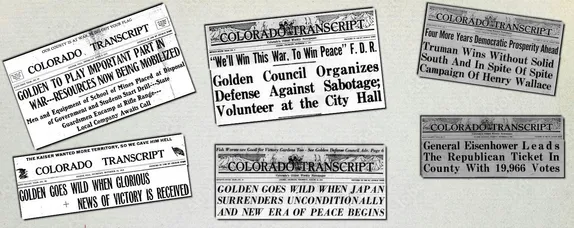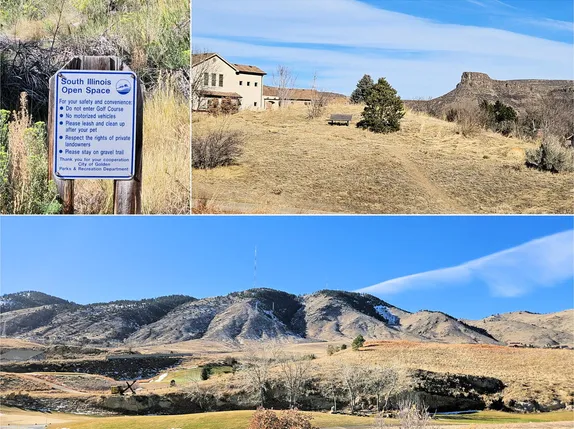117 Years Ago
The April 4, 1907 Colorado Transcript wrote about "The People Who Are Making Golden Pottery A Success." The article explained that--after a number of delays and setbacks--the pottery factory was up and running. The group running the plant at that time was one of several who tried to make that business a success.
Geijsbeek Pottery was built at the west end of 8th Street in 1901. It was located along the railroad tracks. The railroad delivered coal and shipped the finished goods. The kilns went online in August of 1901 and a month later they were building an addition for another kiln.

The business failed quickly, By October of 1902, the company’s assets were being sold to satisfy creditors. There were a few attempts over the years to revive the industry, including the group running it in 1907. The most successful of the bunch was John Herold.
Mr. Herold was an experienced industrial potter from Ohio, who had moved to Colorado for his health. He worked alone in the big Geijsbeek building, testing and firing various types of local clay. In 1910, his work caught the attention of Adolph Coors,who invited Herold to move his operation into the empty Coors glass works. Coors used Herold's work as the basis for Coors Porcelain.
In 1918, local builder Oscar Nolin purchased the Geijsbeek building to demolish it and sell the usable construction materials. The August 22, 1918 Transcript reported that he had sold a hundred thousand bricks to be used in construction of a Denver hospital. In October, the City purchased “a number of heavy timbers taken from the old Geisbeek pottery, for use in building bridges.”
Despite the failure of Geijsbeek and several other aspiring manufacturers, pottery did become a vital industry in Golden. Coors Porcelain eventually evolved into the globally-known CoorsTek.







